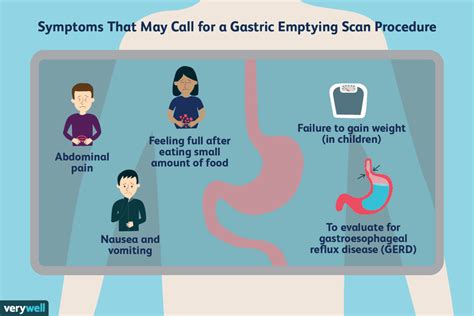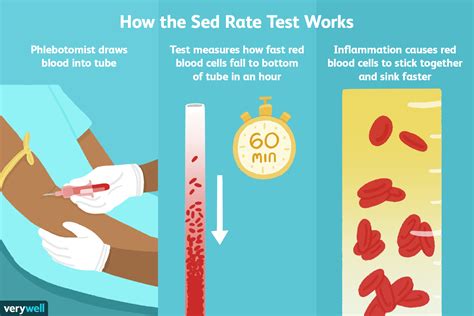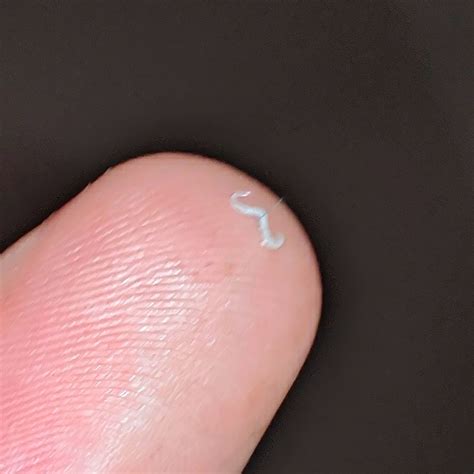The gastric emptying test is a diagnostic procedure used to assess the rate at which the stomach empties its contents into the small intestine. This test is crucial in evaluating gastrointestinal motility disorders, such as gastroparesis, which can cause symptoms like nausea, vomiting, bloating, and abdominal pain. The gastric emptying test can help healthcare providers diagnose and manage these conditions more effectively.
What Happens During a Gastric Emptying Test?
The gastric emptying test typically involves the following steps:
- Preparation: Patients are usually asked to fast for a certain period, typically 4-6 hours, before the test to ensure that the stomach is empty.
- Meal Consumption: The patient is given a meal that contains a small amount of radioactive material, usually technetium-99m or indium-111. The meal can be a liquid, solid, or a combination of both.
- Imaging: After consuming the meal, the patient lies down on a table, and a special camera, called a gamma camera, takes pictures of the stomach and small intestine at regular intervals. The camera detects the radiation emitted by the radioactive material, allowing the healthcare provider to visualize the movement of food through the digestive system.
- Data Analysis: The images are then analyzed to determine the rate at which the stomach empties its contents into the small intestine. This is usually measured as a percentage of the meal that has emptied from the stomach at specific time points, such as 1, 2, and 4 hours.
Types of Gastric Emptying Tests
There are several types of gastric emptying tests, including:
- Solid Gastric Emptying Test: This test involves consuming a solid meal, such as eggs or oatmeal, that contains a radioactive material.
- Liquid Gastric Emptying Test: This test involves consuming a liquid meal, such as water or a nutritional supplement, that contains a radioactive material.
- Breath Test: This test involves consuming a meal that contains a small amount of a non-radioactive material, such as carbon-13. The patient then breathes into a device that measures the amount of carbon dioxide in their breath, which can indicate the rate of gastric emptying.
Interpretation of Gastric Emptying Test Results
The results of the gastric emptying test are usually expressed as a percentage of the meal that has emptied from the stomach at specific time points. The normal range for gastric emptying varies depending on the type of test and the population being studied. In general, a normal gastric emptying test result shows that:
- 10-30% of the meal has emptied from the stomach within 1 hour
- 50-70% of the meal has emptied from the stomach within 2 hours
- 90-100% of the meal has emptied from the stomach within 4 hours
Abnormal results may indicate gastroparesis or other gastrointestinal motility disorders. Healthcare providers may use the results of the gastric emptying test to diagnose and manage these conditions, and to monitor the effectiveness of treatment.
Gastric emptying tests are an essential tool in the diagnosis and management of gastrointestinal motility disorders. By assessing the rate at which the stomach empties its contents, healthcare providers can gain valuable insights into the functioning of the digestive system and develop effective treatment plans.
Risks and Limitations of Gastric Emptying Tests
While gastric emptying tests are generally safe, there are some risks and limitations to consider:
- Radiation Exposure: The test involves exposure to small amounts of radiation, which may be a concern for some patients.
- Allergic Reactions: Some patients may be allergic to the radioactive material or other substances used in the test.
- Inaccurate Results: The test results may be inaccurate if the patient has certain medical conditions, such as diabetes or gastrointestinal obstruction.
- Limited Availability: Gastric emptying tests may not be widely available, and patients may need to travel to a specialized center to undergo the test.
Alternative Diagnostic Tests
There are several alternative diagnostic tests that may be used to evaluate gastrointestinal motility disorders, including:
- Endoscopy: A procedure that involves inserting a flexible tube with a camera into the stomach and small intestine to visualize the digestive tract.
- Gastroscopy: A procedure that involves inserting a flexible tube with a camera into the stomach to visualize the stomach lining.
- Manometry: A test that measures the muscle contractions of the digestive tract to diagnose motility disorders.
- Electrogastrography: A test that measures the electrical activity of the stomach to diagnose motility disorders.
Gastric emptying tests are a valuable diagnostic tool in the evaluation of gastrointestinal motility disorders. By understanding the test procedure, interpretation of results, and limitations, healthcare providers can develop effective treatment plans and improve patient outcomes.
FAQs
What is the purpose of a gastric emptying test?
+The purpose of a gastric emptying test is to assess the rate at which the stomach empties its contents into the small intestine, which can help diagnose and manage gastrointestinal motility disorders.
How long does a gastric emptying test take?
+A gastric emptying test can take anywhere from 1-4 hours, depending on the type of test and the patient's condition.
What are the risks and limitations of a gastric emptying test?
+The risks and limitations of a gastric emptying test include radiation exposure, allergic reactions, inaccurate results, and limited availability.
What are the alternative diagnostic tests for gastrointestinal motility disorders?
+Alternative diagnostic tests for gastrointestinal motility disorders include endoscopy, gastroscopy, manometry, and electrogastrography.
By understanding the gastric emptying test and its role in diagnosing and managing gastrointestinal motility disorders, healthcare providers can develop effective treatment plans and improve patient outcomes.



